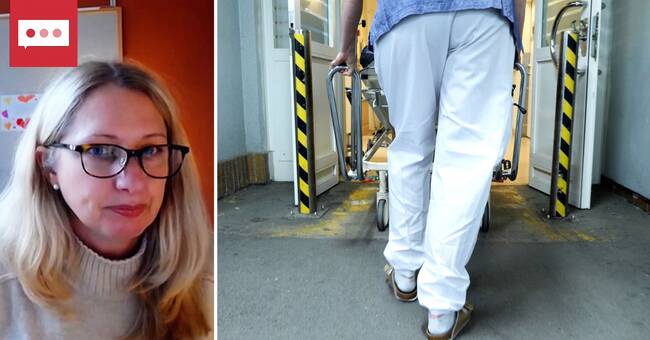The levels of intensive care covid patients measured in April are still a long way off.
At that time, more than 500 people were cared for at the same time in the intensive care unit (IVA) throughout the country.
But the calm trend of the summer has been broken and now the number of admissions is increasing at a rapid pace.
- It is a result of the increasing spread of infection that we have had for a few weeks and that we have actually seen, says Karin Modig, associate professor of epidemiology at Karolinska Institutet.
The delay from the time of infection to a person being cared for on IVA is between one to two weeks depending on age.
- This means that we can expect it to continue upwards for a couple of more weeks no matter what we do, says Karin Modig.
Spread in several age groups
Most are cared for at iva in Stockholm, 15 people, followed by Västra Götaland, 8, and Uppsala, 7.
There is no exact answer as to why the spread of infection is increasing, but only speculation, says Karin Modig.
After the summer, schools and workplaces have reopened, more people travel by public transport and cluster infections have arisen in connection with student parties.
The image that the coronavirus after the summer has only spread among younger people is now taking a hit, Modig thinks.
- This iva increase shows that it is not only young people who are infected.
The median age of iva is around 60 years, so we have the spread of infection in several age groups.
Concerns in hospitals
At the hospitals in the most vulnerable regions, staff are witnessing the increased pressure.
- We have in principle fully occupied with only covid patients.
We have also received help from other hospitals to take over patients with covid, says Rickard Lagedal, IVA doctor at the University Hospital, to SVT Uppsala.
Concerns are also growing about how the staff will cope with a second onslaught at the hospitals.
- We are afraid that we will end up in the same situation as in the spring.
Do we have the strength, can we take care of our employees?
says Cornelia Härtel, chief physician at Södersjukhuset's emergency room in Stockholm, in SVT's Helgstudion.
The curve can be influenced
Whether Sweden, like large parts of Europe, is heading into a second wave is difficult to say according to Karin Modig.
- It depends on what we define as a wave.
If we look at the number of confirmed cases, it has the pattern of a wave.
But if we look at the iva and death curve, it does not look like a second wave yet.
How worried should we be?
- Quite seriously worried considering that we can still influence and maintain control.
We have done this before, but this IVA increase is a signal of how fast things can go in the wrong direction.
Here you can delve more into iva statistics for Sweden.

